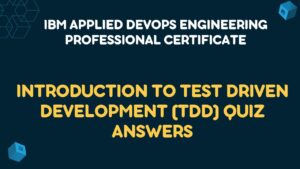Table of Contents
Robotics: Computational Motion Planning Week 1 Quiz Answers
Quiz 1: Graph-based Planning Methods
Q1. If you use the Grassfire or breadth first search procedure to plan a path through a grid from a node A to a node B, then you use the same procedure to plan a path from node B to node A, will the two paths have the same length?
- Yes
- No
2. If you use the Grassfire or breadth first search procedure to plan a path through a grid from a node A to a node B, then you use the same procedure to plan a path from node B to node A, are the two paths guaranteed to be the same except in opposite directions?
- Yes
- No
Q3. If you use the grassfire algorithm to plan a path through a series of grids with increasing dimension, 2 dimensional, 3 dimensional, 4 dimensional etc. The amount of computational effort required increases ___________ with the dimension of the problem.
- linearly
- logarithmically
- exponentially
- quadratically
Q4. Generally speaking, which procedure would take less time to find a solution to a typical path planning problem on a discrete grid or graph?
- Grassfire/Breadth first search
- Dijksta’s algorithm
- A*
Robotics: Computational Motion Planning Week 2 Quiz Answers
Quiz 1: Configuration Space
Q1. Configuration Space obstacles allow us to model:
- Only the shape of the robot
- Only the shapes of the obstacles in the environment
- Both the geometry of the robot and the shapes of the obstacles in the environment
Q2. The effective dimension of the configuration space of the robot is determined by:
- The dimensionality of the workspace, for example a robot restricted to the plane will have a 2 dimensional configuration space while a robot moving in 3 dimensions will have a 3 dimensional configuration space.
- The number of joints or degrees of freedom that the robot mechanism has. For example a robots that can translate and rotate in the plan will have a 3 dimensional configuration space reflecting 2 degrees of translational freedom and 1 rotational. A robot with 5 revolute joints will have a 5 dimensional configuration space.
Q3. True or false: the Visibility graph method is complete because it will always find a path through space if one exists and report failure if there is no path.
- True
- False
Q4. True or false, the Trapezoidal Decomposition method is complete because it will always find a path through space if one exists and report failure if there is no path.
- True
- Fasle
Robotics: Computational Motion Planning Week 3 Quiz Answers
Quiz 1: Sampling-based Methods
Q1. True or false : The Probabilistic RoadMap procedure tries to builds a graph that captures the structure of the entire configuration space before it tries to find a route between two points.
- True
- Fasle
Q2. True or false: the Probabilistic Roadmap (PRM) method is complete because it will always find a path through space if one exists and report failure if there is no path.
- True
- False
Q3. True or false: the Rapidly Exploring Random Tree (RRT) method is complete because it will always find a path through space if one exists and report failure if there is no path.
- True
- False
Robotics: Computational Motion Planning Week 4 Quiz Answers
Quiz 1: Artificial Potential Fields
Q1. Artificial Potential Fields are designed to (click all that apply):
- Attract the robot to the goal
- Repel the robot from the goal
- Attract the robot to obstacles
- Repel the robot from obstacles
Q2. True or false: the Artificial Potential field method is complete because it will always find a path through space if one exists and report failure if there is no path.
- True
- False
Q3. True or false: Artificial Potential Field methods can lead the robot to become stuck at locations other than the desired goal location.
- True
- Fasle
Get all Quiz Answers of Robotics Specialization
Course 01: Robotics: Aerial Robotics Quiz Answers
Course 02: Robotics: Computational Motion Planning Quiz Answers
Course 03: Robotics: Mobility Quiz Answers




